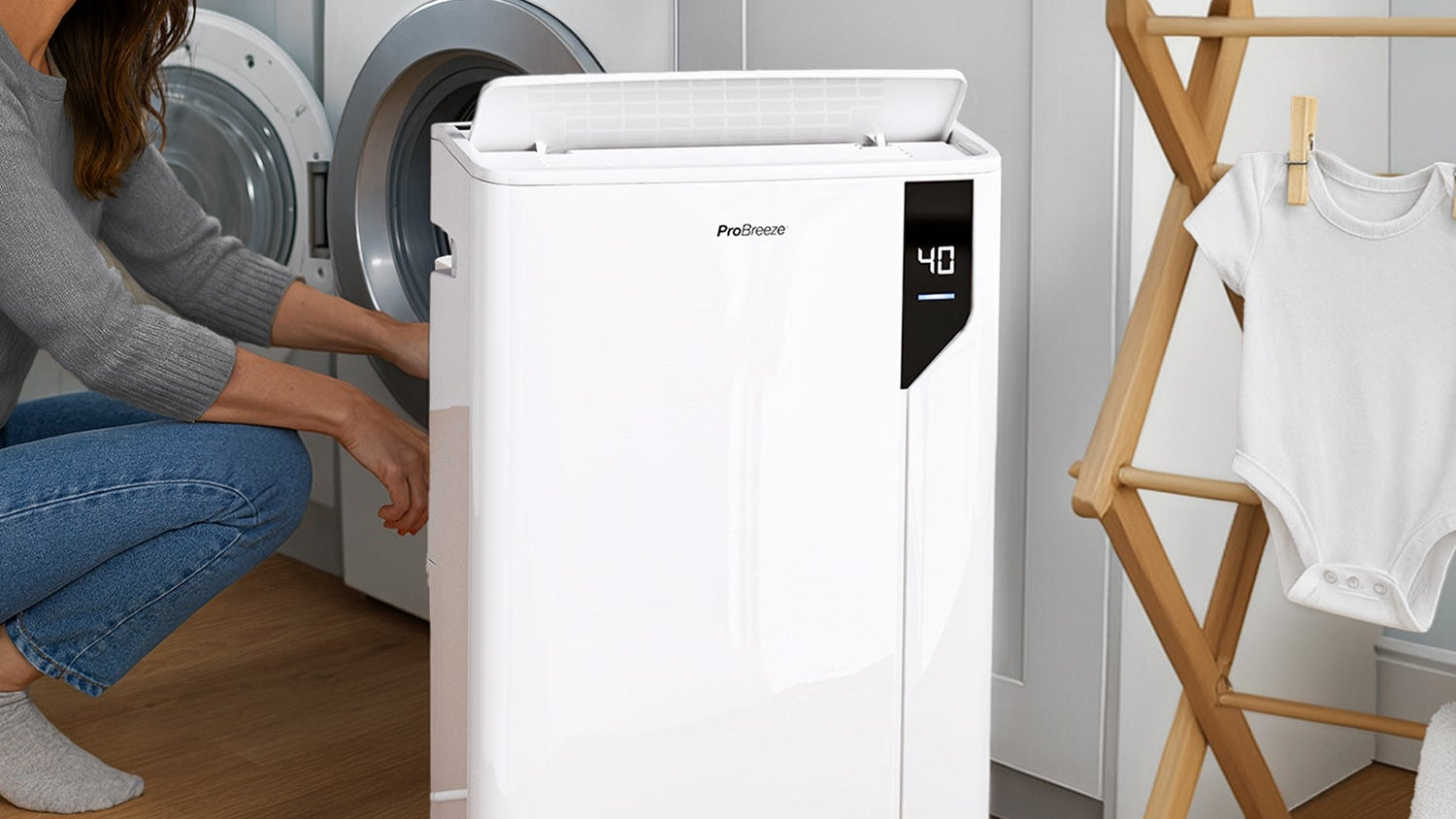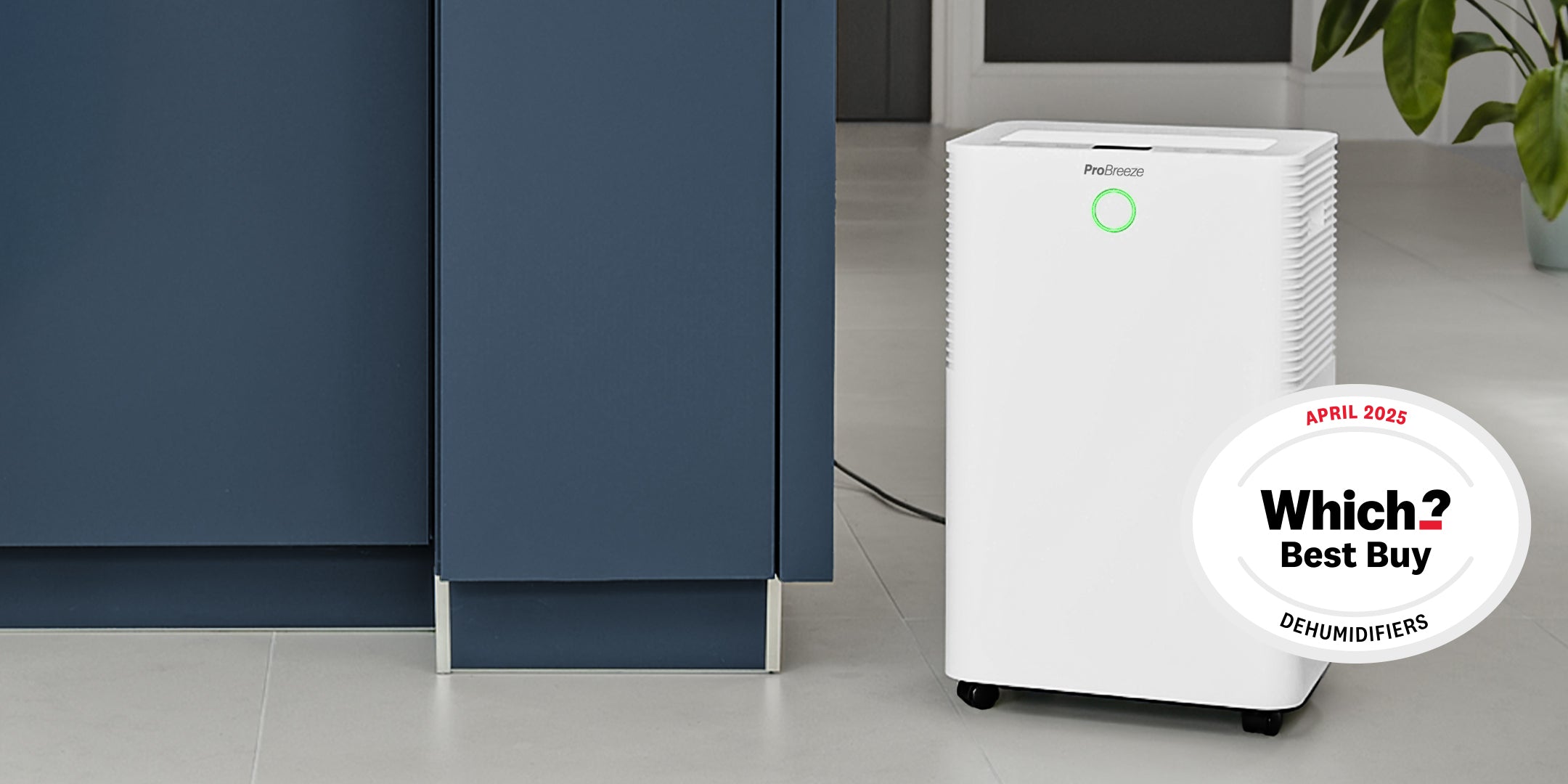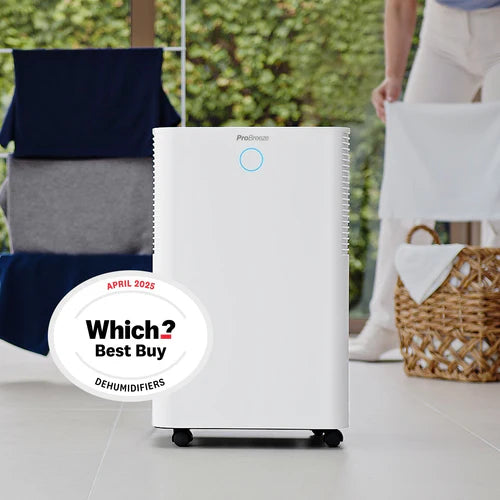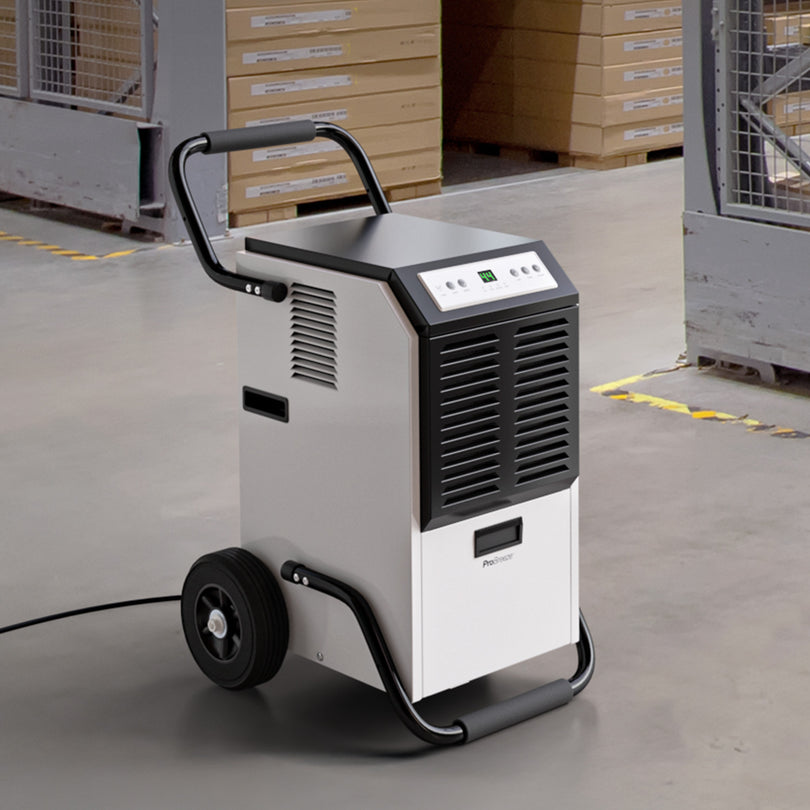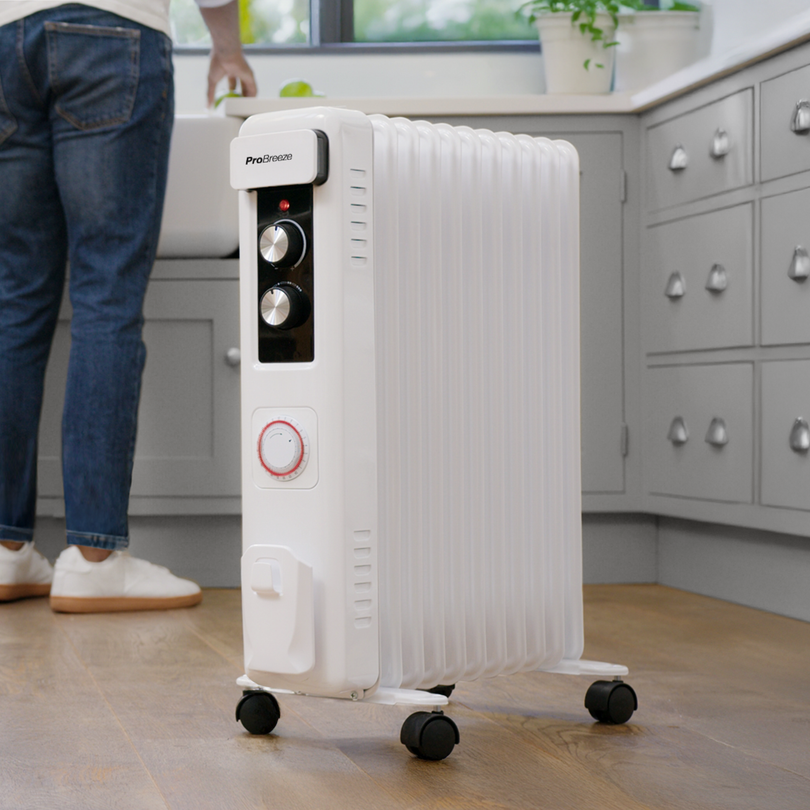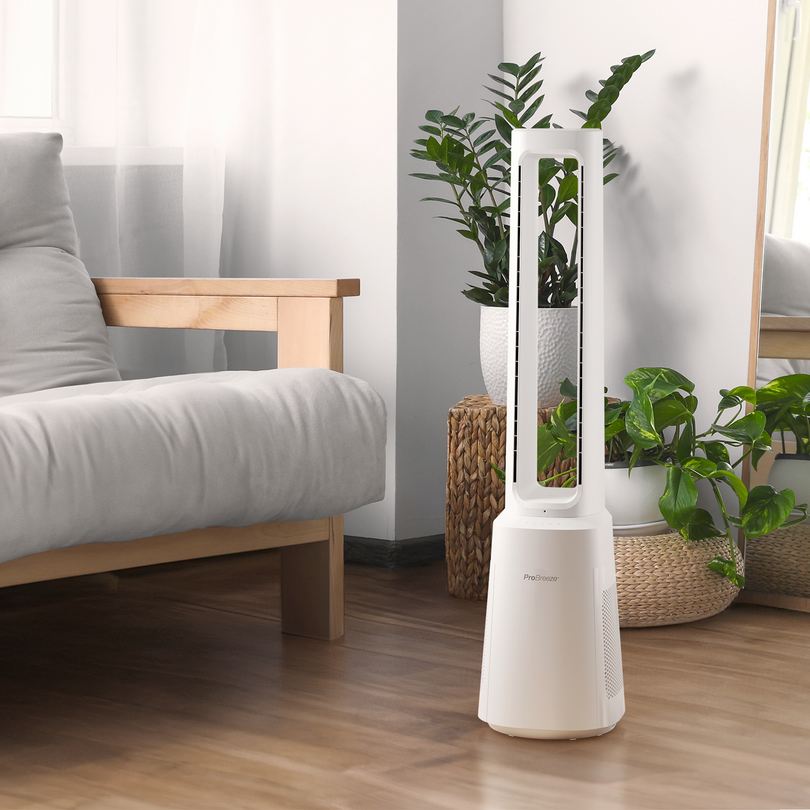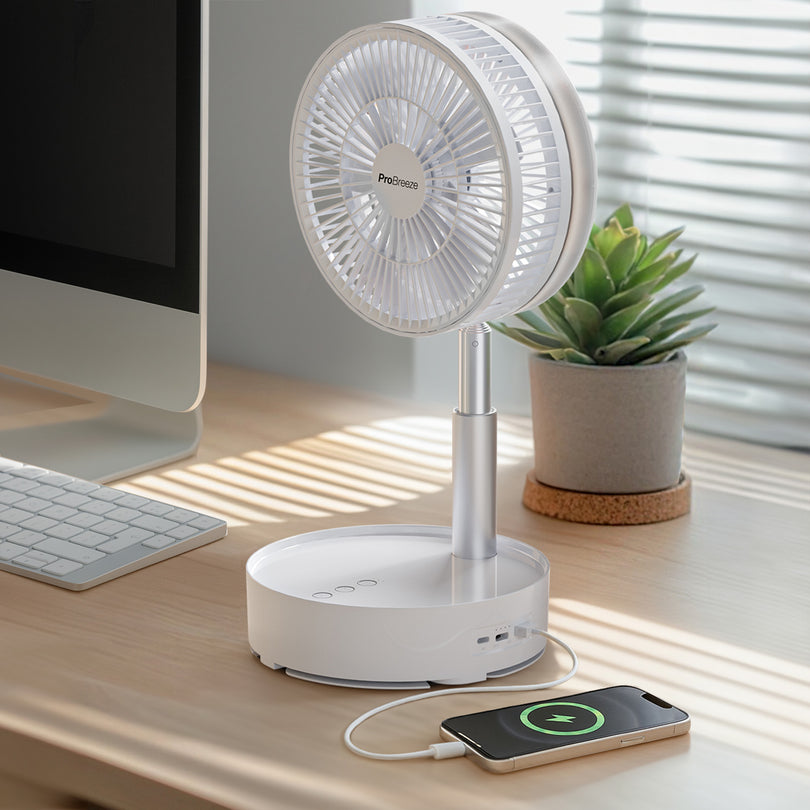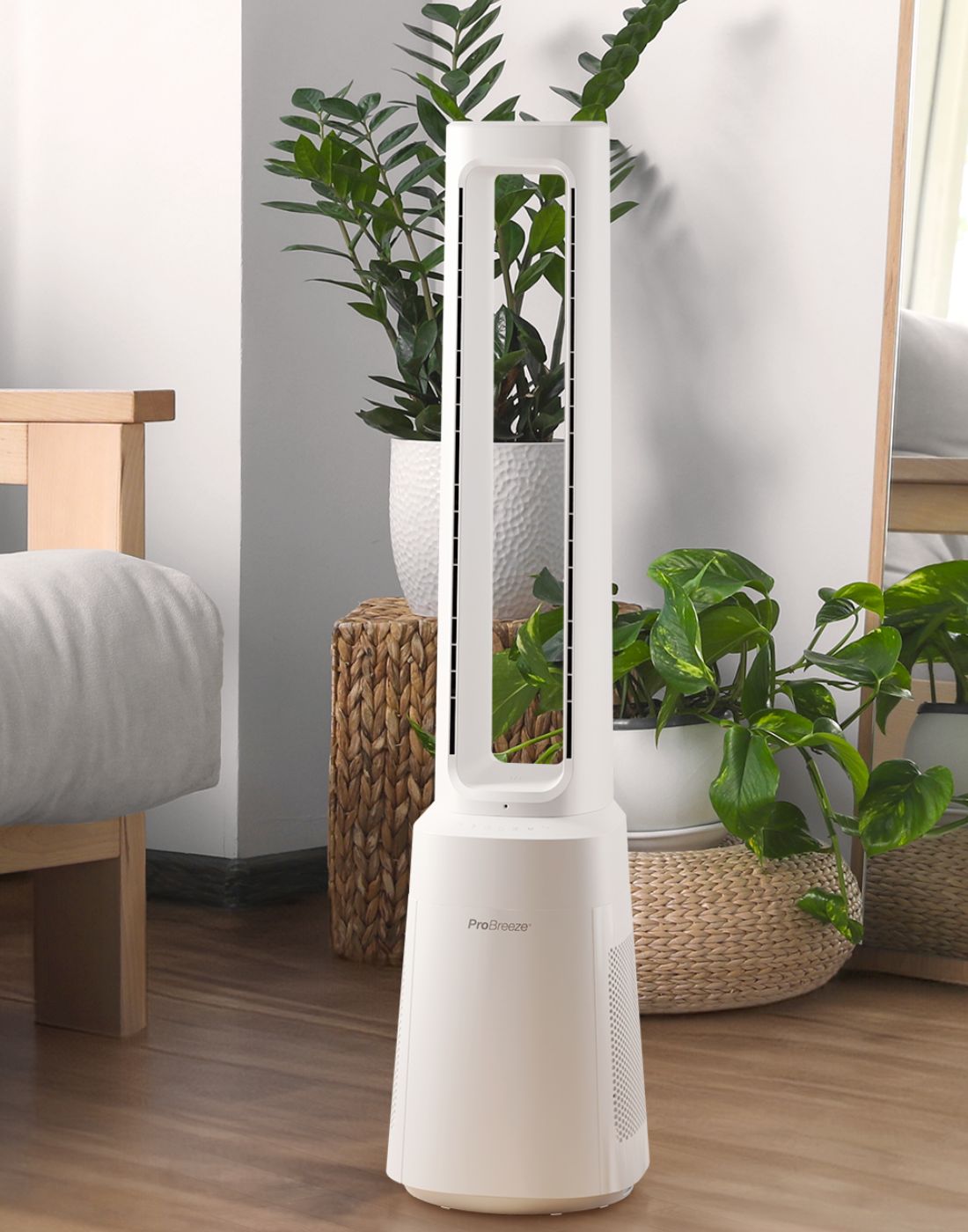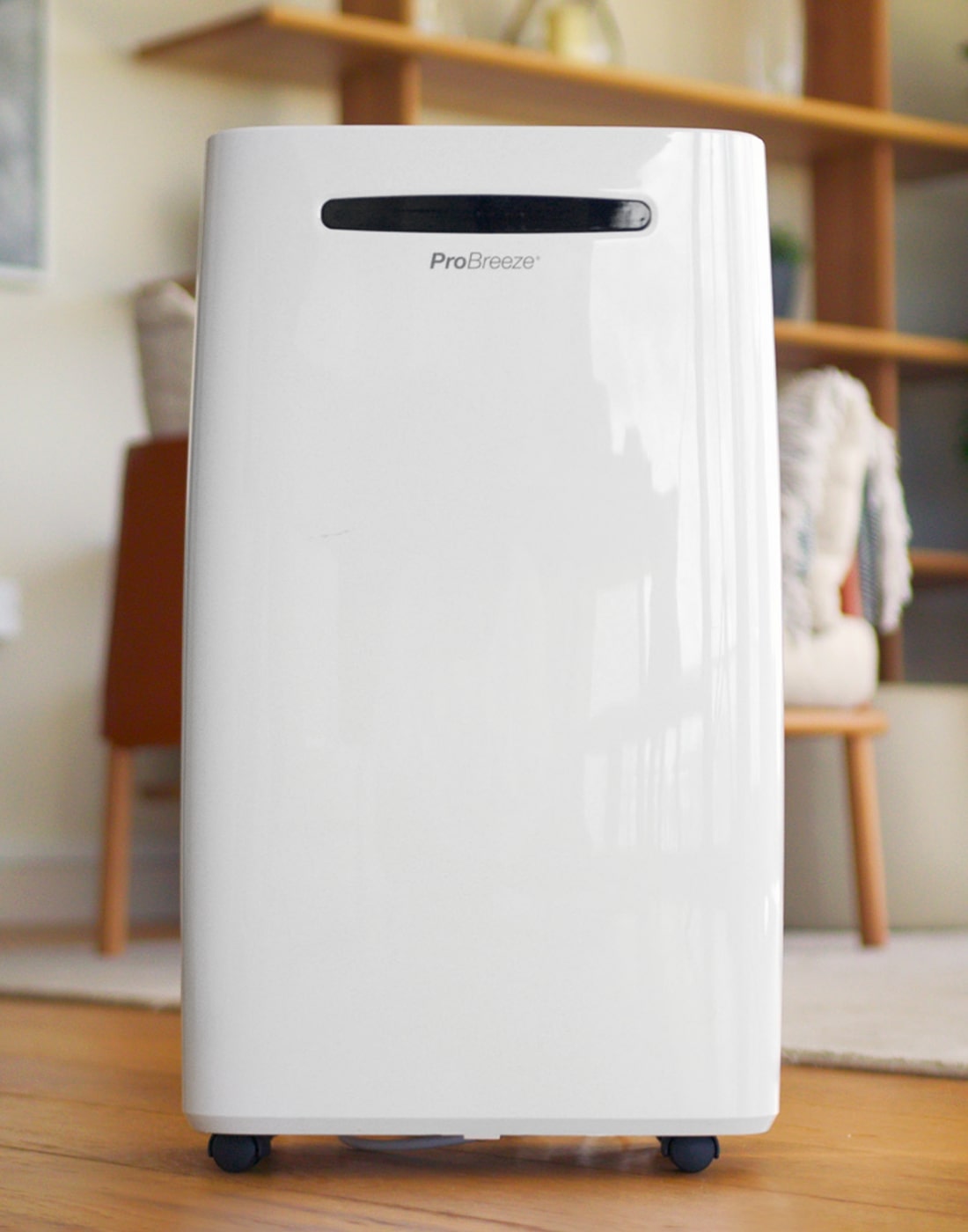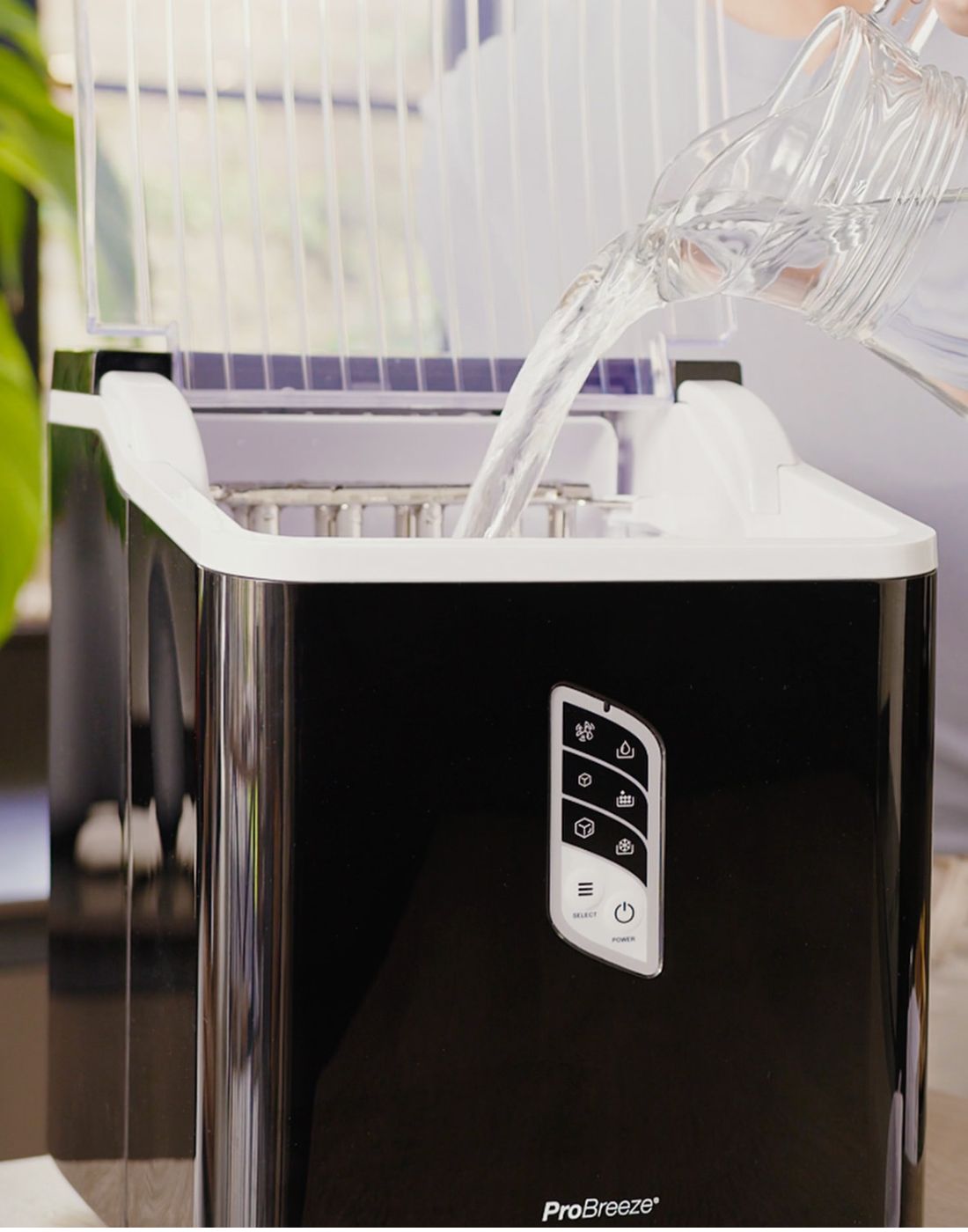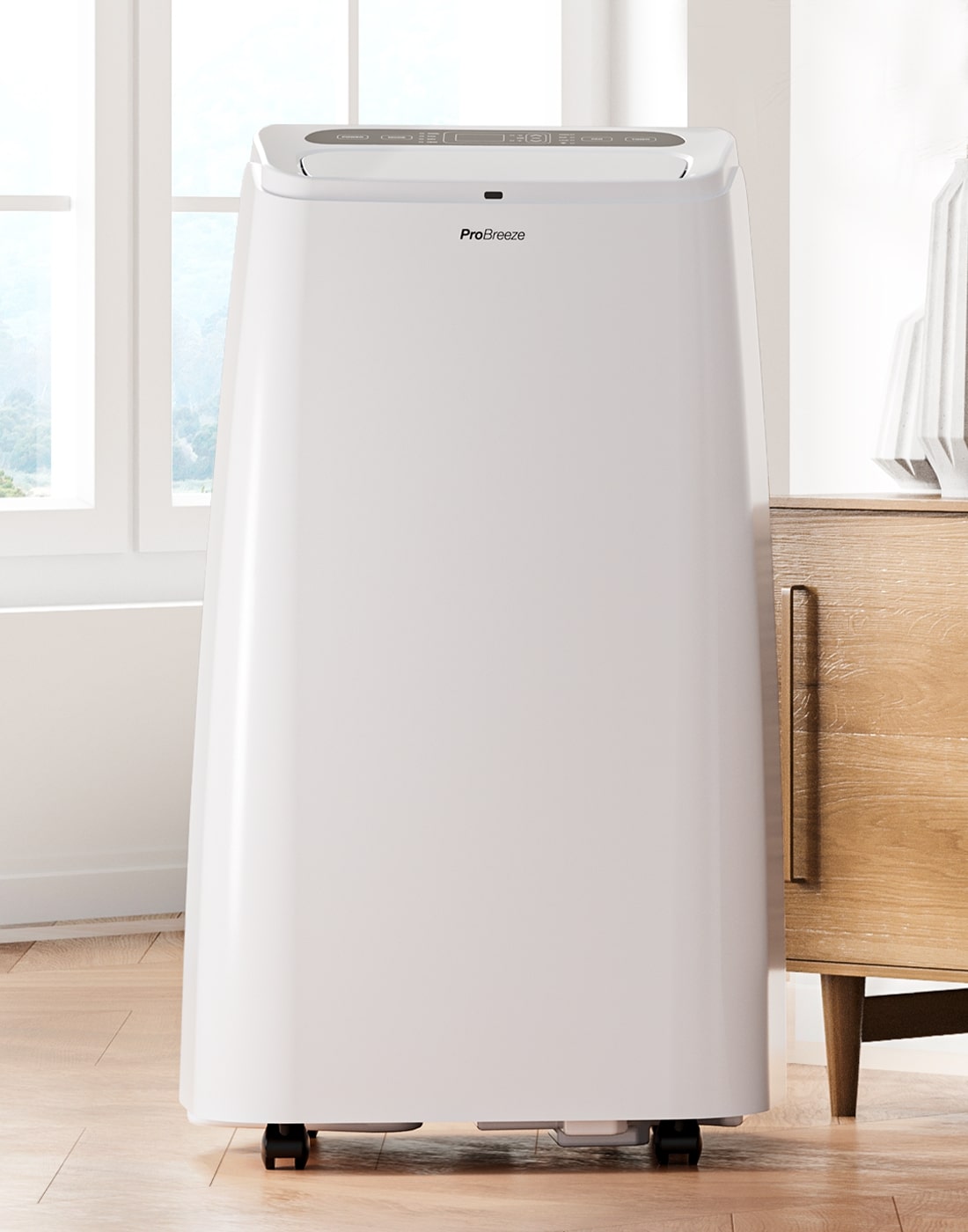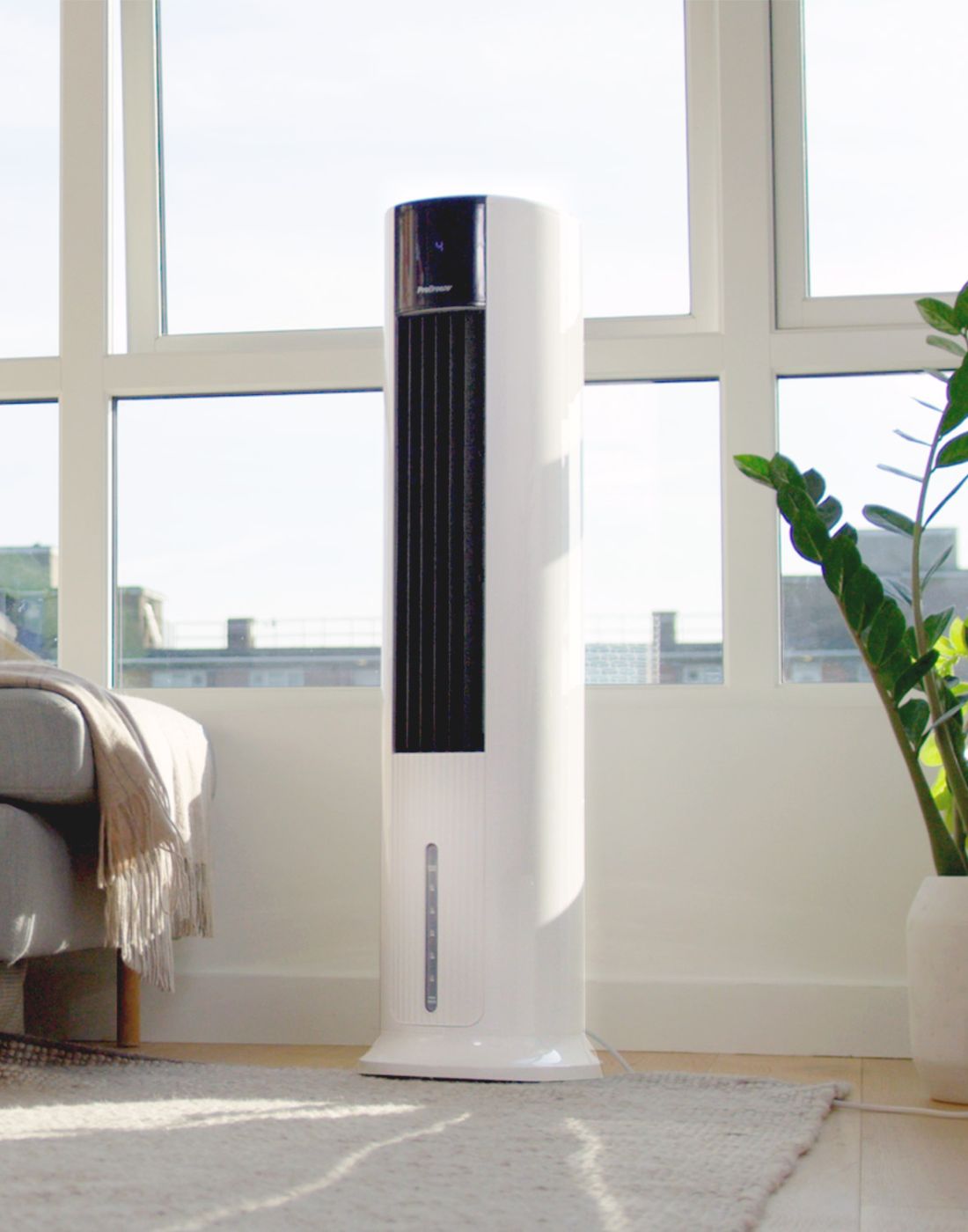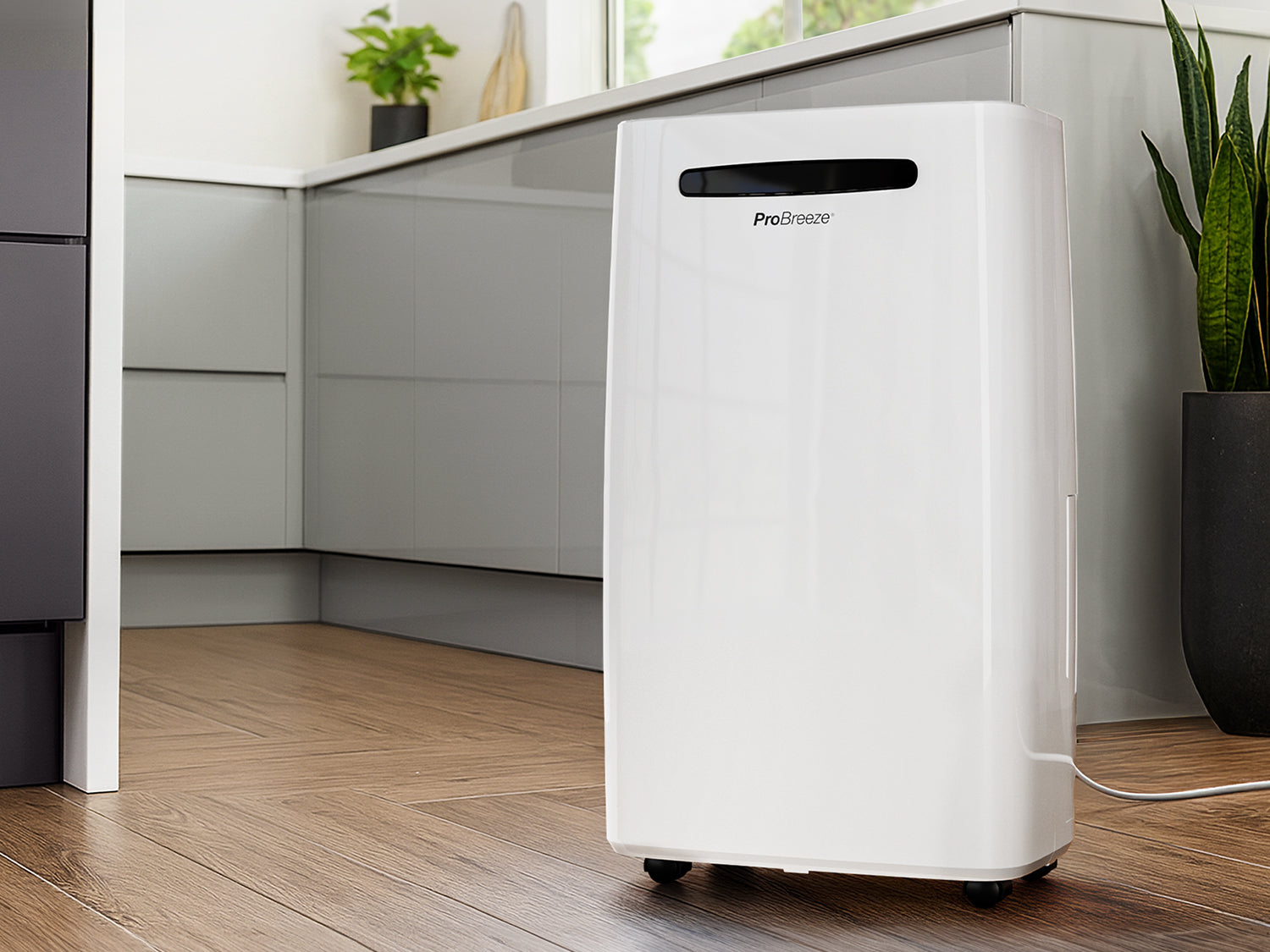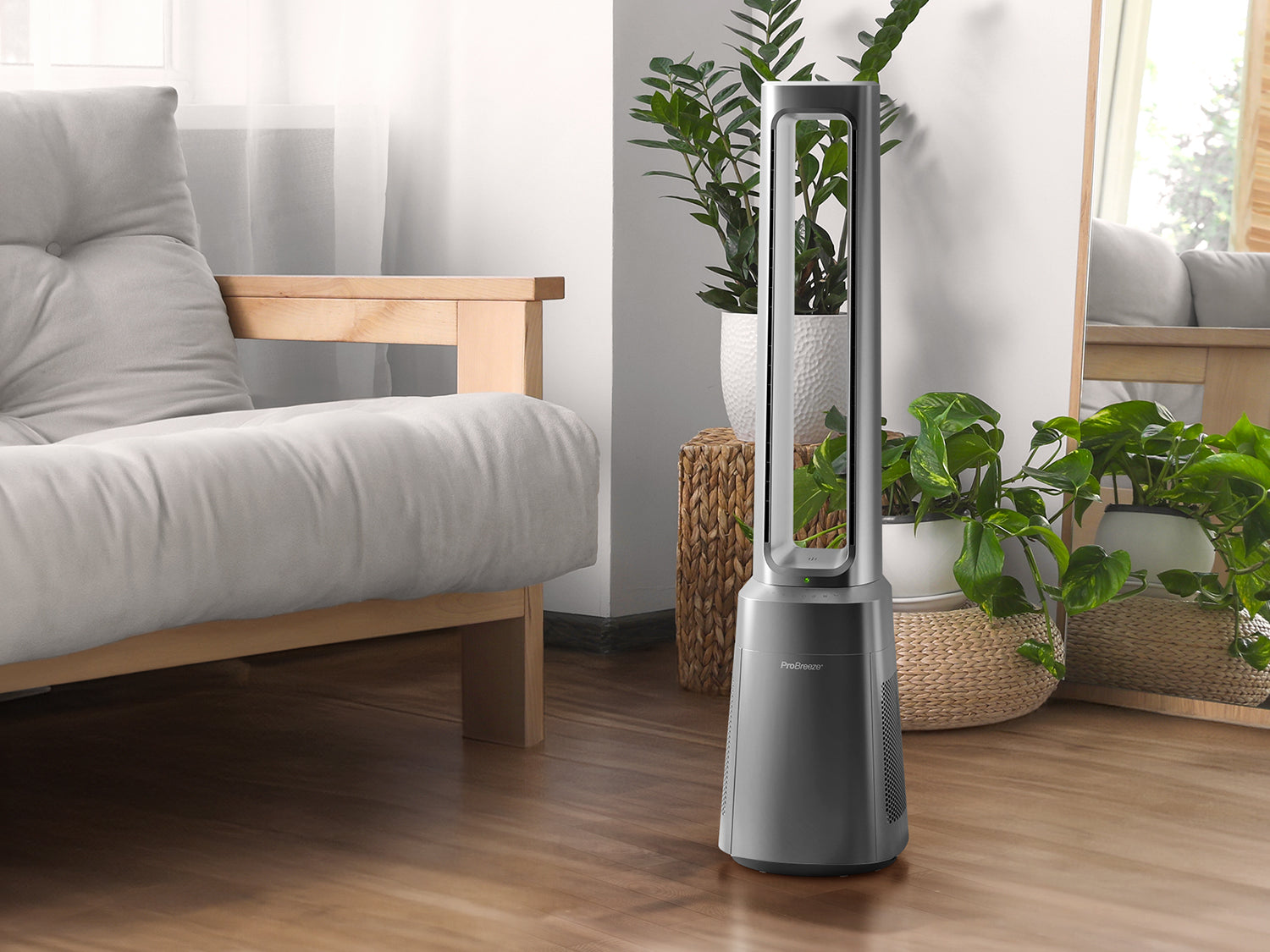Excess moisture in your home can lead to many problems, from black mould and mildew to musty odours and peeling paint or damaged furniture. But maintaining optimal humidity indoors is essential to protect not just your home but also your family members and yourself. Two popular solutions to combat humidity are moisture absorbers and dehumidifiers. Both extract moisture from the air, but are different in the way they look and operate. So which one is right for you? Let's dive into the differences, pros, and cons of each to help you make an informed decision.
Understanding the Basics
Moisture Absorbers
Moisture absorbers are non-electric devices that use desiccant materials, such as calcium chloride, to draw moisture from the air. They are typically compact, portable, and easy to use, making them ideal as a moisture absorber for room use, perfect for bathrooms, wardrobes, storage rooms and cupboards. Whether you need a house moisture absorber for everyday protection or a travel-friendly option, these little heroes are simple but effective.
Dehumidifiers
Dehumidifiers are electric appliances that extract moisture from the air using refrigeration or absorption methods. They come in various sizes and capacities, suitable for different room sizes and humidity levels, making them ideal moisture removers for tackling persistent damp in larger areas. This includes common rooms like living rooms and bedrooms, as well as offices and basements.
Pros and Cons
Moisture Absorbers
Pros:
- No electricity required
- Silent operation
- Portable and easy to place
- Cost-effective for small areas
Cons:
- Limited moisture removal capacity
- Requires regular replacement of desiccant material
- Not suitable for large or highly humid areas
Dehumidifiers
Pros:
- Efficient moisture removal
- Suitable for larger spaces
- Adjustable humidity settings
- Some models offer additional features like air purification
Cons:
- Requires electricity
- Higher initial cost
- Produces noise during operation
- Regular maintenance needed
Ideal Use Cases
- Moisture Absorbers: Best for small spaces like closets, bathrooms, or cupboards where electricity access is limited. These make perfect moisture traps for tucked-away damp spots in the home.
-
Dehumidifiers: Ideal for larger areas such as living rooms, basements, or entire apartments where humidity levels are consistently high. These are powerful moisture removers that keep your environment dry and comfortable.
Types of Moisture Absorbers

Disposable Moisture Absorbers
These single-use options use moisture-absorbing crystals, typically in a bag or sealed plastic container. As they work, the crystals dissolve into a liquid. They’re ideal for very tight spaces like under the sink or inside shoe cabinets. However, they fill up quickly and need frequent replacement, which makes them less eco-friendly and potentially more expensive over time.
Reusable Moisture Absorbers
Reusable designs like the Osmo® use a solid tablet that gradually absorbs moisture over 90–100 days. Once the water tank fills, simply empty it and drop in a new moisture absorber refill tablet. These units are perfect for small spaces like under sinks, in bathrooms, wardrobes, and shoe cabinets. Bonus: they look stylish and discreet, so unlike traditional moisture absorbers, you won’t be hiding them when guests visit. They're a more eco-conscious and economical solution for long-term moisture control.
Types of Dehumidifiers

Peltier Dehumidifiers
Also known as thermo-electric dehumidifiers, these are compact and ultra-quiet, perfect for desktops, wardrobes, and small bedrooms. They use a solid-state cooling element rather than a compressor, making them lightweight and low maintenance, but best suited for small spaces.
Compressor Dehumidifiers
These are the powerhouses. Compressor models use refrigerant coils to condense moisture from the air and are great for medium to large rooms. They're powerful, efficient, and ideal for consistently damp areas like basements, laundry rooms, or open-plan living spaces. Many compressor dehumidifiers come with advanced features like automatic humidity control, traffic light system indicators, LED screens and Wi-Fi compatibility.
Desiccant Dehumidifiers
Instead of refrigerant, desiccant dehumidifiers use a moisture-absorbing material (a desiccant) that works well even in cooler environments. They're lighter than compressor models, can operate at lower temperatures, and are a great option for garages, conservatories, or unheated spaces.
Pro Breeze Solutions
At Pro Breeze, we offer a range of products to suit your moisture control needs:
- Moisture Absorbers: Our Osmo® house moisture absorber provides silent, energy-free moisture control for small spaces.
- Dehumidifiers: From compact models to larger units, our dehumidifiers efficiently reduce humidity in different room sizes.
- Moisture Absorber Refill Tablets: Keep your Osmo® moisture absorber for room use functioning optimally with our easy-to-use refill tablets.
Choosing between a moisture absorber and a dehumidifier depends on your specific needs and the environment. For small, enclosed spaces with minor humidity issues, moisture absorbers are a convenient and cost-effective solution. However, for larger areas or persistent humidity problems, dehumidifiers offer a more powerful and adjustable approach.
Explore our full range of moisture absorbers and dehumidifiers to find the perfect fit for your home.
For more information on managing humidity and improving indoor air quality, check out our other articles on the Pro Breeze blog.
